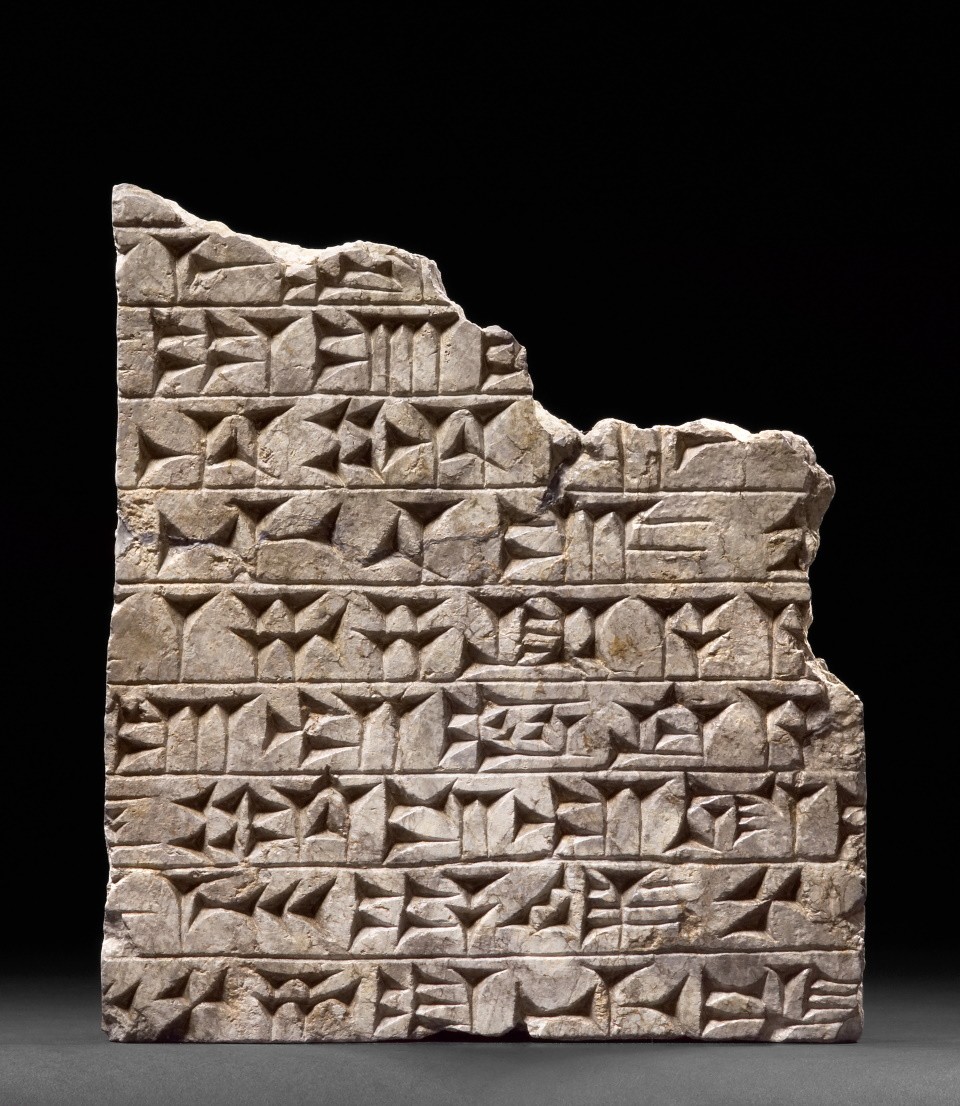The royal inscription in Akkadian, written in cuneiform, reports on a campaign by the Assyrian king Sanherib (704-681 BC). The biblical king Hezekiah of Judah is also mentioned.
The inscription is divided into nine horizontal rows, each separated by a groove. The four lower rows are completely preserved, the three upper rows are heavily damaged at the sides. Monumental royal inscriptions were written on stone in Assyria.
On the reverse side, an unknown Hanoverian, W. Sonnemann, painted in red the alleged place of discovery of Nineveh and the reference to Layard's excavations. Austen Henry Layard (1817-1894) was one of the most important British archaeologists of the 19th century. He became famous for his excavations at Nineveh and Nimrud. (AVS)
en








